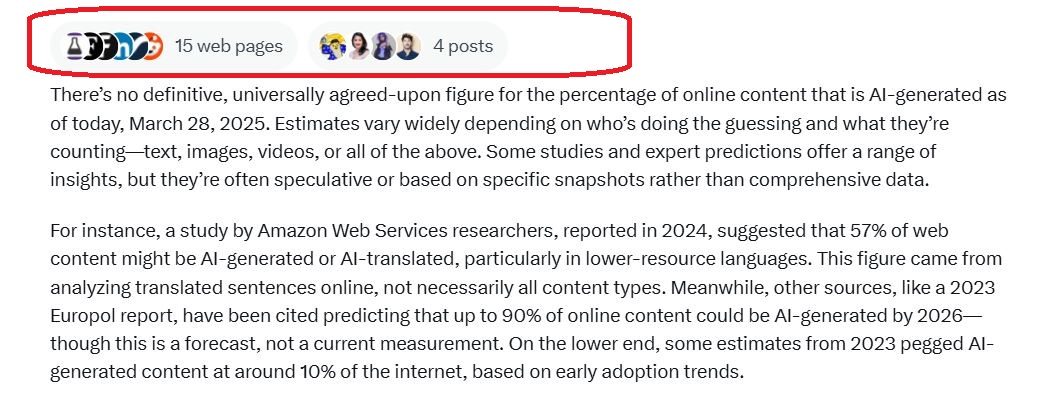The AI Content Paradox is on the Horizon
- March 28, 2025
- Bradley Taylor
Currently, search engines like Google claim that posting AI content on your website will not harm your rankings in any way. They also claim that if you use AI content and find a way to expand on it, that it may actually help your ranking. So, this is a green light to copy and paste AI-generated content all you want as long as you add a sentence or two, right? Not so fast.
Working in web development and tech for almost 25 years has given me a keen eye on seeing how things will develop based on current and past circumstances. It was easy to see the rise of content management systems (CMS) like WordPress and Joomla before they were even available. I have also been a very strong believer in the future of cryptocurrency, in that it fills many rolls that traditional fiat currency simply cannot. For the past 11 years I have advised my friends to buy as much as they can. So, how does this relate to the topic at hand?
When you search an AI model it will usually provide a list of references somewhere on the page. In the case of Grok, X.com’s AI engine, it provides references right at the top of the page (see image below). There you will find a link to 15-25 websites and a handful of social media posts which Grok used to build the answer. You will also see in this same image that Grok believes about 57% of content online is AI generated. So, where am I going with this? Stay tuned, it’s coming.
For my entire career, the advice I have given to clients (and have used myself) has been to always create unique content, no matter what. No short cuts. If you have content that nobody else is offering, then your site or blog becomes that much more valuable. Search engines still routinely ignore or even punish sites that copy source material word-for-word. But since AI content is uniquely written every time it is asked a question then this is as good as unique content, right? Again, no.
Finally, I get to my point. From Grok itself: “..some studies (e.g., from 2023 on models like GPT-3) found that up to 20-30% of responses contained inaccuracies when dealing with complex or niche topics.”. If people are loading the internet with AI generated content, which contains roughly 25% erroneous information, and AI generates its answers from content already available on the web, what is to prevent AI from using that faulty information as a reliable source and producing it over and over again? Nothing.
Not only that but the more pages online which contain this bad information, the more weight AI will place behind its authenticity. And so, the paradox begins. How many years will it take before the bad information completely drowns out the good?
Stay the Course
Keep writing unique content. We all understand it takes way longer to create it. But, when search engines and AI’s wake up to the impending paradox, they will surely start rewarding unique content and begin burying AI content. Millions of people will wake up one day and find that they have fallen out of the search results while millions of others will notice a boom in traffic.
My prediction is that AI most definitely has its place in our industry to create new ideas, give us stats and figures, and even help you write the occasional paragraph that you are struggling to complete. But nothing will replace human generated content, at least in the near future. And there isn’t an AI in existence that doesn’t have a counterpart in the AI detection industry. Even if your AI generated content gets by the detector today, it won’t tomorrow.
Now, there is a chance AI will develop to the point of producing content which will be indistinguishable from that written by a human, but we aren’t there yet. And all the AI content which exists online as of me writing this article is completely detectable.
There are other AI paradox’s which have been explored online but I haven’t seen an article about this particular one yet. Therefore, I will proudly (and with somewhat of a tongue-in-cheek approach) name this paradox The Taylor AI Content Paradox. Simply defined, it is a continuous re-issuing of erroneous information where new AI generated content sources false information generated by prior AI searches.
Popular AI detection Programs
AI Content Detector | AI Detector | Detect GPT4 | Copyleaks




